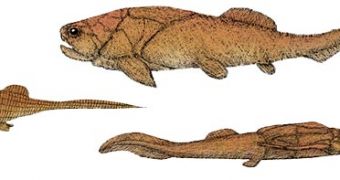Do you what to look into the eyes of your distant ancestors? Try looking at a frog's eye. Then look at a fish. But what next? Paleontologist Dr Carole Burrow from University of Queensland's School of Integrative Biology had just discovered some 410 million-year-old specimens in central New South Wales and got the chance of looking into the fossilized eyes of these early vertebrates.
"Even though they probably have no modern descendants, placoderms were the most primitive group of jawed fish, and their eyeballs give us an insight into what came before modern fish," Dr Burrow said.
Dr. Burrow didn't just look at them, her team used X-ray microtomography to investigate the three-dimensional construction of the fossils and uncovered amazing details of their inner and outer structure. This is a first. Previous work on the few other fossil eye capsules known have been based on visual examinations or fractured sections.
"Out in the field my collecting is highly speculative, basically picking up likely-looking lumps of limestone," she said. "It's only when I've gone back to the lab, dissolved the samples in acetic acid, and sifted through the dirt and residues under the microscope that I find these small bone fragments, so it was great to uncover such complete specimens."
The discovery of these eyes, each only about half-a-centimeter in diameter, is important for unraveling the evolutionary story of the eye. And as the analysis was performed the scientists weren't spared of their share of surprises:
"We were able to prove that these fish had an extra muscle attachment to the eye," she said. "It has been assumed that six muscles were the norm for all vertebrates (from lampreys to humans) and we can only speculate on the functional 'need' for seven muscles.
"I think that one possibility is that the extra eye muscle is related to these fish having an eye stalk attaching the eyeball to the braincase."

 14 DAY TRIAL //
14 DAY TRIAL //